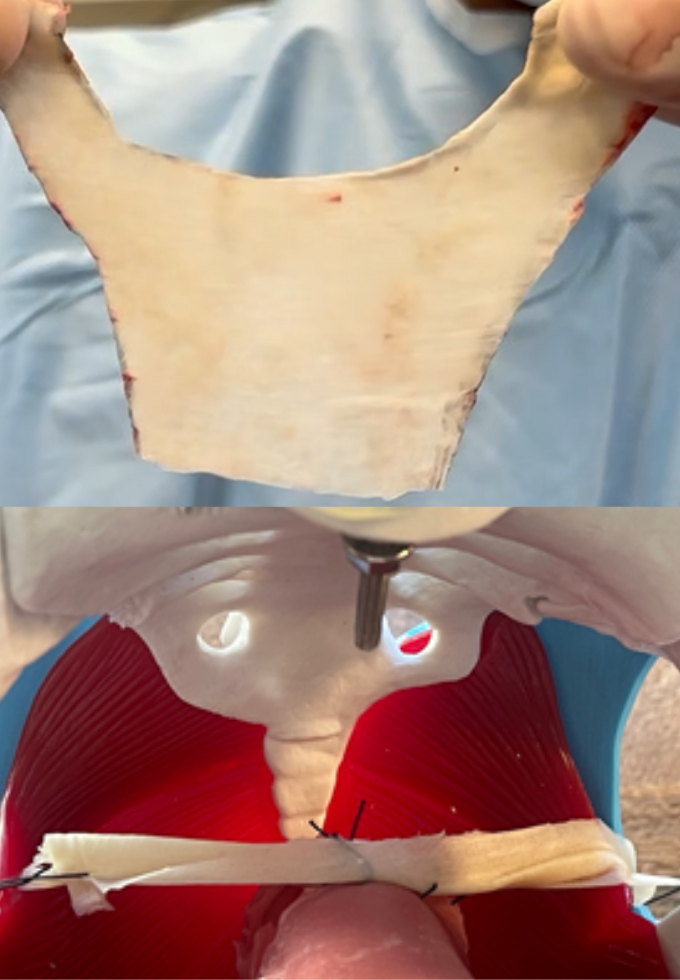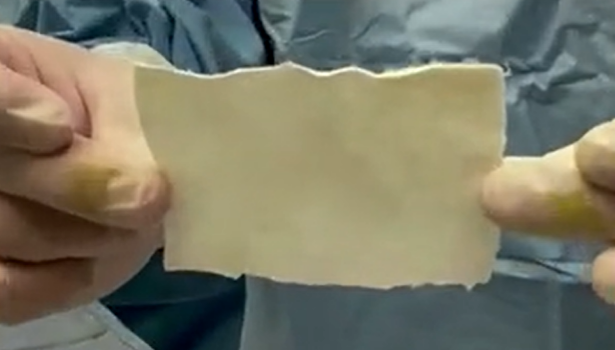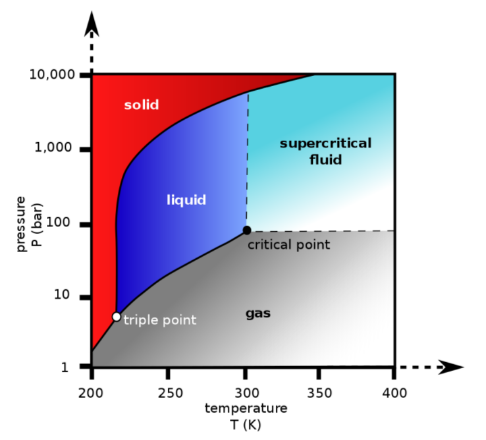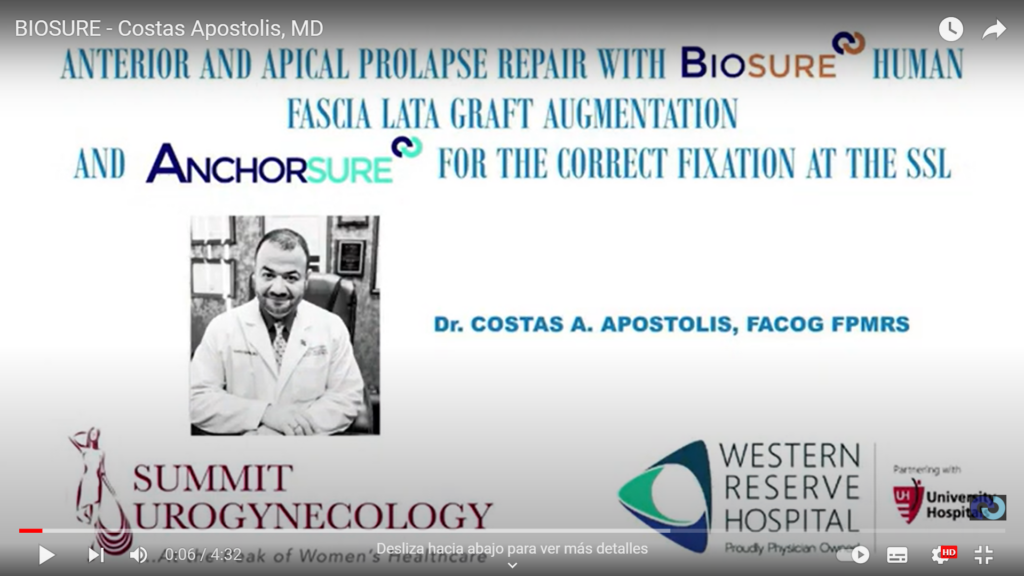
Fascia Lata Graft
The only graft not using gamma radiation for sterilization/decellularization
Gamma radiation affects mechanical properties of biological meshes, avoiding it, Biosure mantains the natural properties of autologous tissue.
Biosure is available in two sizes for POP:
- 10x7cm for Apical + Anterior compartment repair
- 10x2cm for Apical compartment repair “Biologic Apical Sling”

Advantatges of using fascia lata
· Fascia Lata is more porous than dermal tissue which allows for good revascularization, good tissue integration and tissue union.
· Dermal Allografts have good flexibility. However, studies have shown that tensile strength and mechanical properties significantly reduce over time, failing to provide long-term support to the pelvic organs.
· Fascia lata has shown the highest tensile strength and long-term stability with its mechanical properties:

Tensile Strength of allograft tissues:
· Fascia Lata: 217 N
· Human dermis: 122N
· Others 42N
*Scaffolds for pelvic floor prolapse; logical pathways. International Journal of Biomaterials, 2018. https://doi.org/10.1155/2018/8040893. A biomechanical cadaveric study comparing superior capsule reconstruction using fascia lata allograft with human dermal allograft for irreparable rotator cuff tear. Journal of shoulder and elbow surgery, https://doi.org/10.1016/j.jse.2017.07.019.
Biosure by Costas Apostolis, MD:
How Biosure is a decellurarized and sterilized?
Super critical CO₂ tecnology

Decellularization and sterilization by Super critical CO₂ (scCO₂)
When CO₂ is sufficiently compressed, it reaches a super critical state above P = 73.8 Bar, combined with a T = 304.13 K (31.0 °C, 87.8 °F) or higher(1), see figure 2. The super critical state has a high (liquid-like) density while having low (gaseous-like) viscosity. In its super critical state CO₂ has lipophilic properties, which enables scCO₂ to dissolve non-polar compounds like: fats, oils and lipids.
Figure 2: The phase diagram of CO2 beyond the critical point CO2 behaves as a super critical fluid
Working principle scCO₂
As the tissue is placed in a pressure chamber together with CO₂ the elevation of the pressure causes the cells in the tissue to burst. Rapid depressurizing subsequently removes the remaining cellular material from the tissue.
scCO2 Decellularization
For the removal of cellular material a range of techniques are available. Conventionally decellularization is based on chemical processes, which have an oxidative or corrosive effect on the tissue. As aforementioned for optimal tissue regeneration the distress on the tissue should be reduced to a minimum. For this reason scCO2 can be used. CO2 on itself is inert (unreactive) and nontoxic, while after the treatment the CO2 readily leaves the graft through evaporation. Additionally CO2 becomes a super critical fluid at mild conditions and therefore has a minimal impact on the tissue. Afegir 3er parraf + taula diapo 8
scCO2 Sterilization
As mentioned the preservation of physiological and biomechanical properties of the tissue is essential. In the same line as with the decellularization, sterilization can be a heavy distress for the tissue(7). Irradiated ECMs are known to undergo radiolysis and degradation. Chemical sterilization, may cause oxidation, corrosion or molecular crosslinking within the ECM, reducing the integrity and initiates degradation. Besides decellularization, scCO2 is also a capable method of removing bioburden. Through the same working principle as for decellularization, contaminations are readily extracted(8). Through the testing of bioburden scCO2 has proven to be an effective way to sterilize tissue products.
Biosure by Omar Dueñas MD, FPMRS – AUGS 2023:

